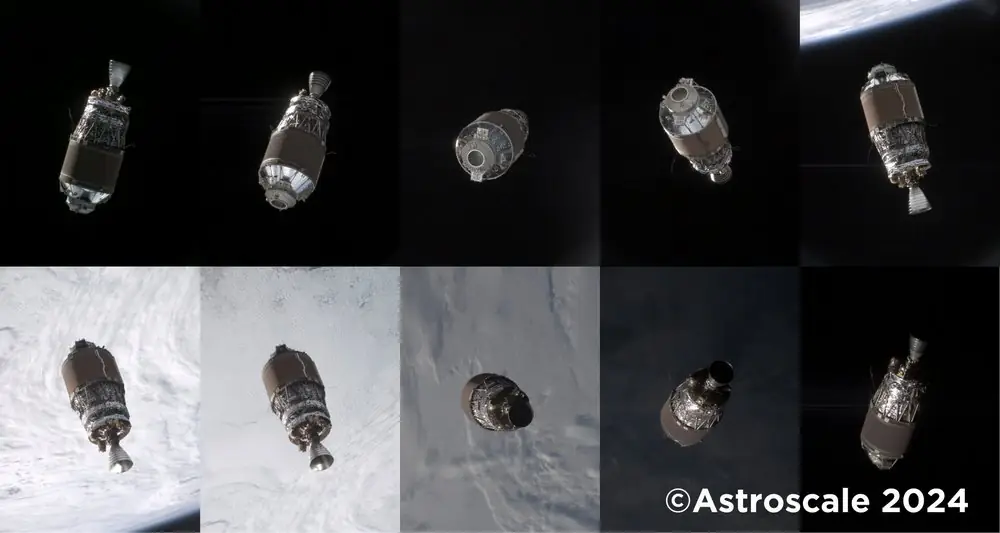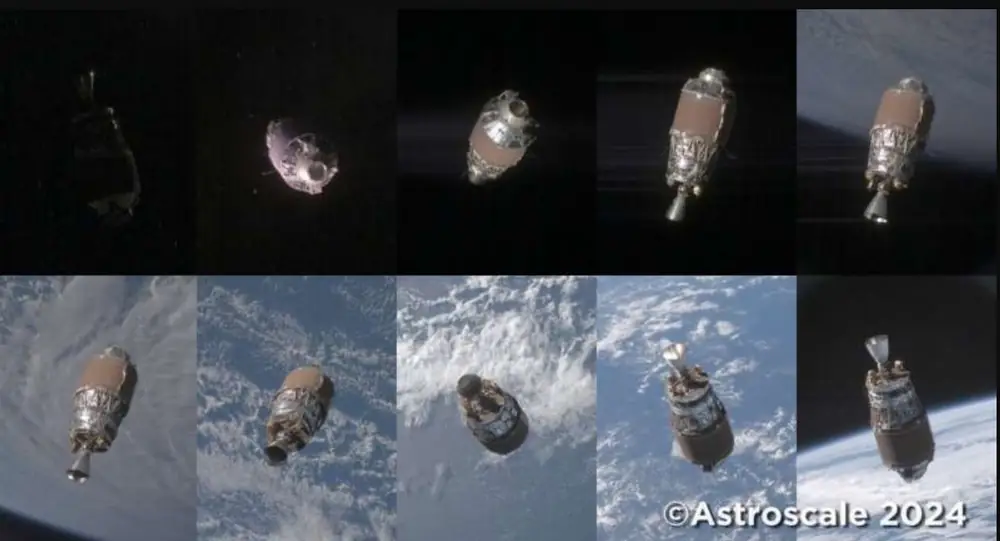The Japan Aerospace Exploration Agency (JAXA) has completed the first phase of the “Commercial Removal of Debris Demonstration” (CRD2) project. As part of this initiative, the ADRAS-J demonstration satellite, developed by Astroscale Japan Inc., successfully captured images of space debris that is not part of the collaboration, using “flyby observation.” These images were released by Astroscale Japan Inc.
The debris flyby service is the third of four services required by JAXA in the first phase of CRD2. This service involves targeting the camera on the debris, maintaining a constant distance from it, and rotating around the debris to capture images from different angles.

On July 15 and 16, 2024, ADRAS-J, operated by Astroscale Japan Inc., successfully performed the debris flyby service in accordance with the safety requirements set by JAXA (JERG-2-026 “Safety Standards for On-Orbit Servicing Missions”). The distance to the target debris was approximately 50 meters. A series of images was successfully captured. In these images, the target debris appears almost stationary, with the PAF directed downward while ADRAS-J maneuvers around and takes photographs.
The specifications for the low Earth orbit flyby service are designed to obtain high-quality images and sufficient data to detect movement, damage, and degradation of long-lived debris, an area where global information is lacking. These specifications were carefully developed based on JAXA’s technical expertise, ensuring their realism. By providing this service, the contracted company gains access to rendezvous and proximity operations (RPO) technologies, which are applicable for a wide range of orbital services, including active debris removal.
When performing orbital services, it is crucial to monitor the relative position and orientation of the spacecraft to approach specific parts of the target for observation or to carry out specific tasks.

Achieving this for non-cooperative targets involves several technical challenges, including the unknown detailed shape and reflective properties of the actual target object, variable visibility of the target, and the impact of reflected sunlight from Earth, which interferes with the operation of navigation sensors (known as the Earth-background problem in non-cooperative relative navigation).
This is a technically complex mission, as the spacecraft must overcome these challenges for relative navigation while providing precise relative control with six degrees of freedom.
The successful and safe completion of this ADRAS-J mission marks a significant step towards achieving two CRD2 goals: acquiring debris removal technology to address the increasingly serious issue of space debris and enhancing the competitiveness of Japanese companies in the orbital services market.
The images allowed us to view the entire surface appearance of the debris, not just the side parts visible during previous fixed observations. Additionally, after 15 years in orbit, detailed identification was made of the upper stage rocket PAF and its surroundings, which are part of the target to be captured during the second phase of CRD2. The string-like objects observed on both sides of the body are likely surface protective tapes, also visible in launch images. These observations provide critically important information for designing and testing the capture system for the upcoming Phase II of CRD2.
Astroscale Japan Inc. will continue to operate ADRAS-J and will initially carry out Astroscale missions planned and executed by the company itself. Subsequently, as the final of the four “services” required by JAXA, a mission completion service (placing the debris into a safe orbit without collision) will be provided.
JAXA has provided extensive technical consultation, test equipment, and research intellectual property, focusing on orbital rendezvous, supporting the development and operation of ADRAS-J. Moving forward, JAXA will continue to offer technical support for ADRAS-J operations and conduct detailed analysis of the images obtained.
Source: Phys








